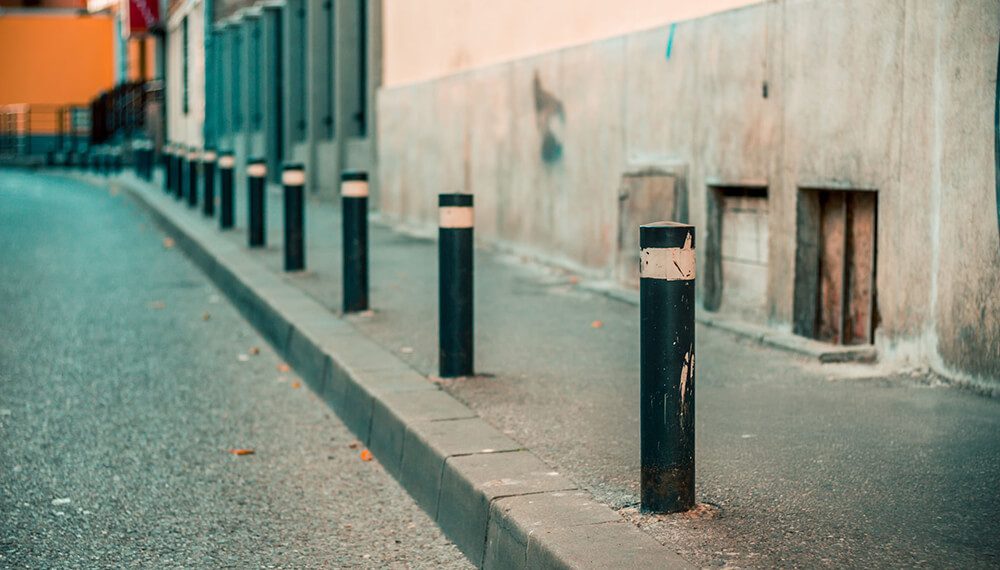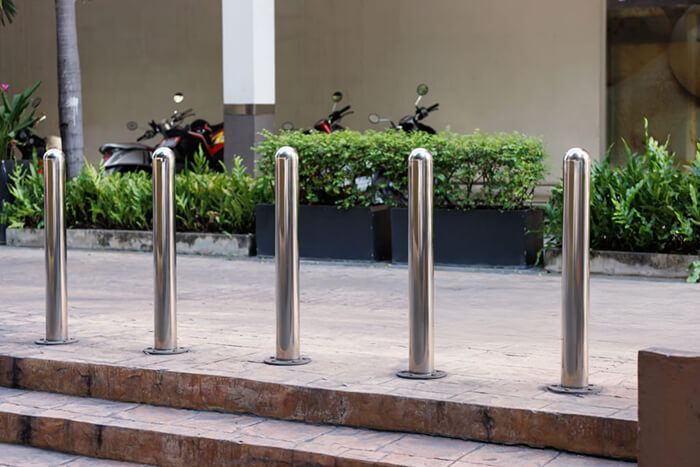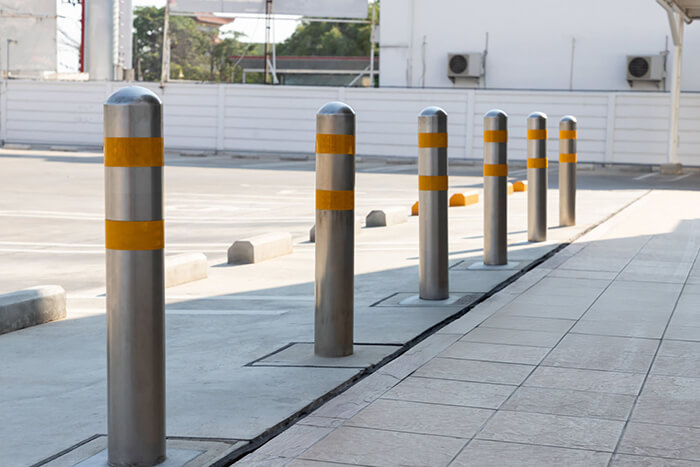Einführung
Bollards and Climate Change: Adapting Infrastructure for Severe Weather is a growing concern as urban planners and engineers look to secure public spaces against increasingly severe weather events. The resilience of infrastructure, including Poller, plays a pivotal role in protecting cities from the damaging impacts of climate change.
With more frequent storms, flooding, and temperature fluctuations, the need for climate-adapted infrastructure is urgent. Poller, which are typically used for traffic management and pedestrian safety, must also evolve to handle these new environmental challenges.
Key points to consider include:
- Bollards as critical elements of urban infrastructure resilience.
- The effects of severe weather on existing infrastructure, leading to increased wear and vulnerability.
- How proper adaptation of bollards can safeguard public spaces from climate-related disasters.
By examining the intersection of Poller and climate change, this article will explore the steps necessary to ensure that urban areas remain safe and functional in the face of evolving climate challenges.

Understanding Bollards in Infrastructure
Poller are an essential component of urban infrastructure, primarily designed for traffic management, pedestrian safety, and protection of sensitive areas. As urban environments evolve, so do the applications and importance of bollards, particularly in the context of climate change adaptation.
What Are Bollards?
- Poller are vertical posts that serve to manage vehicle access, ensuring that specific areas are protected from unauthorized vehicles.
- They are used to enhance pedestrian safety in high-traffic zones by providing a physical barrier between people and vehicles.
- Bollards also serve as security devices, preventing vehicle-based attacks in sensitive locations.
Types of Bollards
There are various types of Poller, each suited to different functions:
- Permanent Bollards: Fixed into the ground, offering long-term protection for specific areas.
- Abnehmbare Poller: These can be temporarily removed or relocated to allow controlled vehicle access.
- Automatic Bollards: Typically controlled by hydraulics or electricity, these rise and lower to allow selective entry, useful for high-security zones.
Importance of Bollards in Urban Infrastructure
- Poller act as passive security measures, preventing vehicles from accessing pedestrian zones or other restricted areas.
- In climate-sensitive locations, bollards can be strategically placed to minimize damage caused by natural disasters such as floods or storms.
- With the rise in climate risks, bollards are not only about managing traffic but also about reinforcing urban areas against environmental impacts.
Understanding the critical role Poller play in infrastructure highlights why their adaptation to severe weather conditions is increasingly important. Urban planners need to ensure that these structures remain effective in protecting public spaces amid evolving climate threats.
Climate Change and Infrastructure Vulnerability
The growing threat of climate change has put all forms of infrastructure, including Poller, at increased risk. As global weather patterns become more unpredictable, cities and urban environments are experiencing more frequent and severe weather events that threaten the stability and functionality of essential structures. To mitigate these risks, understanding the vulnerabilities in infrastructure is crucial, especially when it comes to components like bollards that play a significant role in urban safety.
Climate Change: A Growing Threat
- The intensification of extreme weather events such as hurricanes, storms, floods, and heat waves has become a pressing issue for urban planners.
- Rising global temperatures contribute to more frequent and severe weather anomalies, putting physical structures at greater risk.
- Infrastructure, including Poller, must be designed to withstand these increasing threats to avoid catastrophic failures.
Impact of Extreme Weather on Infrastructure
- Flooding: Floodwaters can corrode materials and weaken the foundations of Poller and other urban structures, leading to instability.
- Heatwaves: Prolonged exposure to high temperatures can cause materials to degrade, making Poller vulnerable to cracking and bending.
- Storm Surges: Coastal areas are particularly at risk, where rising sea levels and storm surges can displace or damage Poller intended for security and traffic management.
- High Winds: Extreme wind events, like tornadoes or hurricanes, can uproot or destroy poorly secured Poller, rendering them ineffective in managing vehicular access.
Bollards and Climate Change
As part of the broader urban infrastructure, Poller must evolve to become more resilient against climate change. Adaptation is no longer optional; it is necessary to ensure that urban areas remain protected.
- Upgrading materials to withstand extreme temperatures and moisture will be key to improving bollard resilience.
- Cities need to prioritize the placement of Poller in flood-prone and coastal areas to prevent damage from rising water levels.
- Reinforced designs will help bollards withstand high-impact weather events like hurricanes and heavy winds.
The increasing impact of climate change on urban infrastructure, particularly on essential components like Poller, underscores the need for innovative designs and materials that can better endure the unpredictability of the modern climate.
Designing Climate-Resilient Bollards
As climate change continues to intensify, designing Poller that can withstand the impacts of severe weather is critical. These bollards must not only maintain their structural integrity but also provide long-term protection in increasingly hostile environmental conditions. Key considerations in designing climate-resilient bollards include material selection, design features, and location-specific adaptations.

Key Climate Risks to Bollards
To create resilient infrastructure, it’s essential to understand the specific climate risks that Poller face:
- Flooding: Water exposure can cause rust, corrosion, and weaken the structural foundation of traditional Poller.
- High Temperatures: Prolonged exposure to extreme heat can lead to material fatigue, warping, or cracking.
- Erosion: Coastal or flood-prone areas experience soil erosion, which can destabilize the base of Poller.
- High Winds: In hurricane or tornado zones, high winds can displace or even uproot Poller not properly secured.
Materials and Design Considerations
Choosing the right materials and design features can significantly increase the resilience of bollards in the face of climate change:
- Stainless Steel: Highly resistant to corrosion, stainless steel is ideal for Poller installed in areas prone to flooding or saltwater exposure.
- Polymer-Coated Steel: This material offers extra protection against moisture, heat, and other weather elements, providing an additional layer of climate resilience.
- Concrete-Filled Bollards: Concrete provides durability and stability, making it a good choice for bollards in areas prone to strong winds or heavy impacts.
Flood-Resistant Bollard Designs
Poller installed in flood-prone areas must be specially designed to handle water exposure and extreme weather conditions:
- Elevated Bollard Bases: Raising the base of bollards reduces the chances of water infiltration, ensuring the internal structure remains dry.
- Water Drainage Systems: Bollards can be designed with drainage capabilities, allowing water to flow through and out of the structure to minimize damage.
- Anti-Corrosion Coatings: Applying specialized coatings to bollards can prevent rust and material degradation in areas with frequent flooding or high humidity.
Case Study: Climate-Resilient Bollards in Action
Many cities are already leading the way in adapting Poller to meet climate challenges. For example:
- New York City: The city has begun using stainless steel bollards along coastal areas to withstand saltwater corrosion and storm surges.
- Miami: Miami has implemented elevated bollard systems to account for rising sea levels, using materials designed for high moisture exposure.
These real-world examples demonstrate the effectiveness of resilient bollard designs in protecting urban areas against the growing threats posed by climate change.
Adapting Bollards for Specific Climate Challenges
As climate change continues to impact urban infrastructure, different regions face unique climate challenges that require specific adaptations for Poller. Understanding and addressing these diverse conditions ensures that bollards remain functional and resilient in the face of environmental stressors like heat, flooding, and soil erosion.
Heat and Temperature Fluctuations
In areas prone to extreme heat or temperature swings, Poller face material degradation, warping, and weakening. To mitigate these effects:
- Heat-Resistant Materials: Bollards constructed from materials such as high-temperature-resistant alloys or specially treated steel can withstand prolonged exposure to high temperatures.
- Thermal Expansion Considerations: Incorporating flexible joints or designs that account for material expansion due to heat can help prevent cracking or bending.
- Surface Treatments: Heat-reflective coatings can be applied to bollards to minimize heat absorption and reduce the risk of material fatigue.
Bollards in Flood-Prone Areas
Flooding poses a significant risk to bollards, particularly in coastal cities or areas prone to heavy rainfall:
- Waterproof Foundations: Installing Poller with waterproof or sealed foundations prevents water from seeping in and compromising structural integrity.
- Corrosion-Resistant Metals: In areas exposed to saltwater or consistent moisture, bollards made from stainless steel or coated with anti-corrosive treatments offer greater longevity.
- Drainage Integration: Adding integrated drainage systems into the bollard design can help manage excess water during heavy rains, allowing bollards to maintain their stability.

Mitigating Erosion and Soil Shifts
Climate change often brings increased erosion, soil instability, and shifting ground conditions, especially after heavy rainfall or flooding:
- Deeper Foundations: Installing bollards with deep-set foundations can anchor them more securely in areas where soil erosion is a concern.
- Foundation Reinforcement: Using reinforced concrete bases or adding steel rods can help stabilize Poller in areas subject to shifting soils.
- Strategic Placement: Positioning bollards away from areas most prone to erosion, such as riverbanks or soft coastal areas, can extend their lifespan and effectiveness.
Storm-Resistant Bollard Designs
In regions that experience high winds, hurricanes, or other violent weather events, Poller need to be able to withstand intense pressure:
- Wind-Resistant Designs: Creating more aerodynamic bollards or using materials with high tensile strength helps them resist wind damage.
- Impact Resistance: Bollards designed to handle strong impacts, whether from debris in high winds or vehicular forces during storms, can ensure they remain functional.
- Secure Mounting: Utilizing heavy-duty mounting systems or bolting bollards deep into the ground provides extra stability against the force of severe weather.
As climate change continues to affect different regions in unique ways, the adaptation of Poller for specific environmental challenges is key to ensuring that urban spaces remain safe and resilient.
The Future of Climate-Resilient Urban Infrastructure
As the effects of climate change become more apparent, urban planners must look beyond traditional infrastructure solutions and embrace innovative approaches to ensure the safety and functionality of public spaces. Poller, as a key element of urban security and traffic management, will play a significant role in this transformation. The future of climate-resilient urban infrastructure lies in sustainability, technology, and cross-sector collaboration.
Sustainability in Urban Planning
Urban planning is increasingly focusing on sustainable infrastructure solutions that are designed to withstand the long-term effects of climate change:
- Eco-Friendly Materials: The use of sustainable, recycled, or renewable materials in bollard construction can help reduce environmental impact while maintaining strength and durability.
- Green Infrastructure Integration: Combining Poller with green infrastructure elements like permeable pavements and rain gardens can enhance flood control and improve water drainage.
- Energy-Efficient Lighting: Solar-powered bollards or those with energy-efficient lighting systems can contribute to sustainable urban development.
Smart Bollard Technology
The rise of smart cities has brought new technological advancements that can further enhance the climate resilience of Poller:
- Real-Time Monitoring: Smart bollards equipped with sensors can monitor environmental conditions such as temperature, moisture, and wind speeds, alerting authorities to potential risks or damage.
- Impact Detection: Sensors can detect impacts from vehicles or debris, enabling faster maintenance and repair responses.
- Data Collection: Smart bollards can collect data on traffic patterns, environmental changes, and weather conditions, helping urban planners make informed decisions about future infrastructure upgrades.
Collaboration Across Sectors
To effectively adapt urban infrastructure to the challenges of climate change, collaboration between various sectors is essential:
- Government and Policy Makers: National and local governments must prioritize climate adaptation in urban planning policies and allocate resources for resilient infrastructure projects.
- Engineers and Urban Planners: Collaborating on innovative design solutions that incorporate the latest materials and technologies ensures that Poller and other infrastructure can withstand severe weather.
- Private Sector Involvement: Public-private partnerships can drive investment in climate-resilient infrastructure, accelerating the deployment of new technologies and materials.
As cities continue to face the growing threat of climate change, the integration of sustainable practices, smart technology, and collaborative planning will be key to creating urban environments that are not only safe but also adaptable to the environmental challenges of the future.
FAQs: Bollards and Climate Change: Adapting Infrastructure for Severe Weather
What materials are most climate-resistant for bollards?
- Stainless steel and polymer-coated steel are among the best materials for climate-resistant bollards due to their high resistance to corrosion and extreme weather conditions.
- Concrete-filled bollards are also highly durable and effective in areas exposed to high-impact weather like hurricanes and strong winds.
How do bollards help in severe weather conditions like floods or hurricanes?
- Poller act as protective barriers that prevent vehicles from entering restricted areas during floods or severe weather, ensuring pedestrian and property safety.
- Flood-resistant designs, such as elevated bollards and those with built-in drainage systems, help mitigate water damage and ensure structural integrity during storm surges.

Can bollards be retrofitted to become more climate-resilient?
- Ja, Poller can be upgraded with materials like stainless steel or treated with anti-corrosive coatings to improve their resilience against climate threats.
- Older bollards can also be adapted with deeper foundations or drainage features to protect against flooding and soil erosion.
How often should bollards be inspected for climate-related damage?
- Regular inspections are crucial, particularly in areas prone to severe weather. Poller should be checked after major storms or floods for signs of corrosion, cracks, or foundation weakening.
- In regions exposed to extreme heat or cold, seasonal inspections can help detect early signs of material degradation.
What steps are being taken to future-proof bollards in urban environments?
- Urban planners are incorporating smart technology into bollards, allowing for real-time monitoring of weather conditions and environmental stresses.
- The use of sustainable materials and eco-friendly designs in bollard construction is becoming more common to reduce environmental impact while ensuring resilience against climate change.
Schlussfolgerung
As climate change continues to reshape the way cities plan and manage infrastructure, the role of Poller in protecting urban spaces from severe weather has never been more critical. From safeguarding pedestrians to preventing unauthorized vehicle access, Poller are an essential part of urban resilience. However, they must be adapted to withstand the increasing threats posed by extreme weather conditions.
Key approaches to achieving this include:
- Utilizing climate-resistant materials like stainless steel and polymer-coated metals.
- Implementing design adaptations for specific climate risks such as flooding, high winds, and erosion.
- Leveraging smart technology for real-time monitoring and data collection, ensuring prompt responses to environmental challenges.
By investing in climate-resilient bollards and infrastructure, cities can better protect their public spaces and ensure that essential services remain operational, even in the face of severe weather events. The future of urban infrastructure relies on collaboration, innovation, and a commitment to sustainability.




